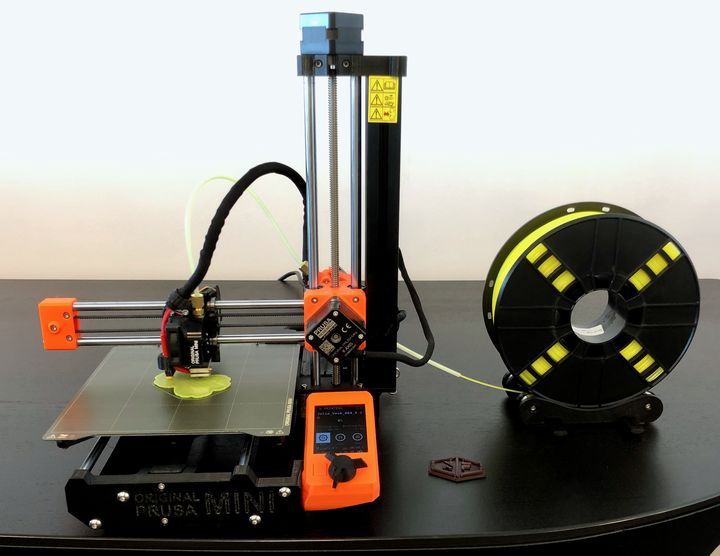
There’s an interesting implication from the achievement of high speed printing on the Prusa Mini.
High speed 3D printing is dominating the world of desktop 3D printing. Ever since the introduction of vibration compensation (a.k.a. input shaping), it’s been possible to build desktop 3D printers that can operate at much higher print speeds.
Typical 3D printers run between 40-80mm/s, but those with the new feature can run at startlingly faster speeds, sometimes up to 600mm/s in certain circumstances. Generally, prints are completed 3-5X faster.
I’ve been using a series of high speed devices that have recently been launched by several manufacturers, and they’re all quite impressive. The prints complete in short durations that would have been considered “science fiction” only a couple of years ago.
But here’s the thing: after using these devices it becomes very, very easy to be accustomed to rapid print speeds and short duration jobs. While we used to accept a 17 hour print job, once you can do it in only four hours your attitude changes.
Now I look around my workshop and see a number of “slow” 3D printers, I really don’t want to use them anymore. The prints will take too long. I’m just not printing on them.
In my eyes, these machines, although perfectly usable, are becoming “junk”.
This is more than likely going to be the same feeling had by many after they experience high speed desktop 3D printing. We are set to become a world full of junk 3D printers.
It’s a bit sad. These devices will probably be relegated to the trash, sooner or later.
But wait, maybe there is another path forward.
Prusa Research has been desperately trying to catch up to Bambu Lab’s ultra-fast devices with the introduction of their MK4 device. The MK4 is touted as a high speed machine, but Prusa Research has yet to officially release the firmware that truly enables high speed operations. [UPDATE: The company officially released MK4 input shaper firmware on September 18.]
In the midst of this development, they somehow ported their high speed firmware to the company’s teeniest machine, the popular Prusa Mini. This experimental firmware was released to the public for download at no charge. Prusa Mini operators are now able to supercharge the speed on their mini simply with a firmware upgrade. Again, this is “alpha” level code, so buyer beware.
This gave me a thought.
What about all those “junk” 3D printers from above? If Prusa Research can “resurrect” one of their most basic 3D printers with more advanced firmware, would it not be theoretically possible to do so with almost any other desktop 3D printer?
Conventional wisdom would suggest that random 3D printers wouldn’t be able to print at high speed because their mechanical systems aren’t sufficiently robust to handle faster motion and rapid momentum changes. Because of that thinking high speed operations have generally been applied only to new machines with suitable motion systems and stiff frames.
The Prusa Mini is pretty much the opposite of that. It is a cantilever design with far less rigidity of typical bedslinger-style devices.
If Prusa Research could make the Mini print far faster, then it should be possible to prepare similar firmware upgrades for most other machines.
But will this happen?
Will 3D printer manufacturers do as Prusa Research has done and issue a free firmware upgrade for their older gear?
Or will they simply make new high speed machines and hope you buy them?
My suspicion is that almost all companies will follow the latter path, meaning we shouldn’t expect to see high speed firmware upgrades from manufacturers.
If that’s the case, then the job of firmware upgrades will be left to third parties and individual DIY operators. The DIY folks will look after themselves, and will endeavor to install Klipper or similar high speed firmware on their aging devices.
But perhaps there is a business opportunity here for someone to figure out how to package up high speed firmware upgrades for a variety of older machines? There are literally millions of slow 3D printers on the planet, many of which are likely capable of high speed 3D printing. Machines like the Prusa MK3, Creality Ender-3, and others are quite widespread and it might be financially viable to market an inexpensive do-it-yourself upgrade kit for these machines. That, or others could do the same using an open source project.
Either way, it may be that those slow 3D printers in your workshop just might not be junk after all.
